I met two locals randomly on the street in the capital of Freetown. Thanks to them I was able to make this trip to Kono, the diamond mine province of Sierra Leone. A remembrance on how amazingly helpful and kind Sierra Leoneans are even when their living conditions are harsh.
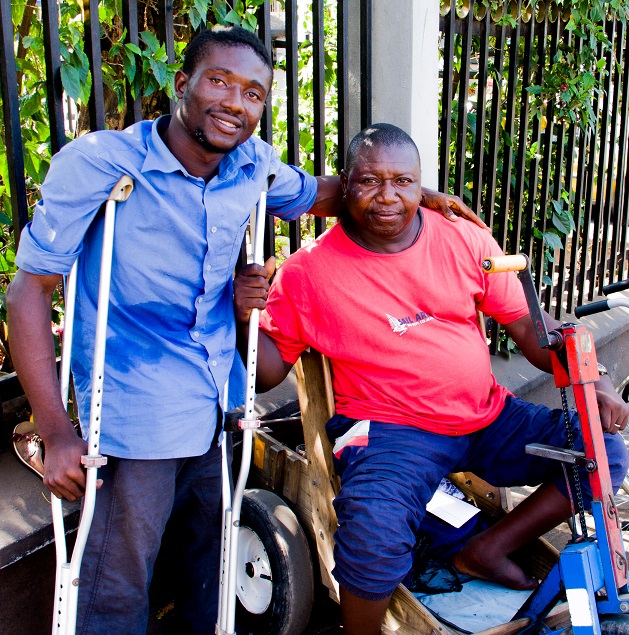
Emerson & Charilaos told me they found it important for me to get to know the country better and see the place where the world’s most expensive gem is being excavated. They know their country is corrupt and has a lot of challenges. There’s a lot of poverty, but they hope their country can change and become a better place on earth. They hope the future for their children will look better. They hope with awareness from Westerns to get more attention to the country. They are both from Kono’s diamond district but they got disabled due to poliovirus at a very young age.
How is it possible that it is still one of the poorest countries in the world with tons of diamonds in the soil?
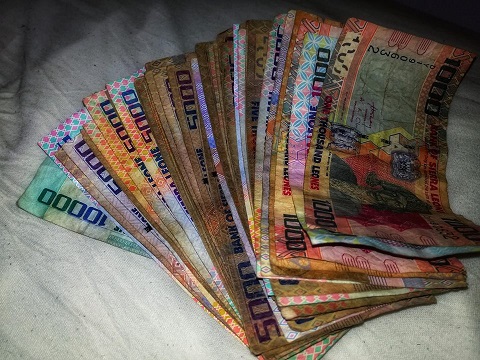
Sierra Leonean Leone is the country’s (old) currency
I wrote about the amazing beaches of Sierra Leone, as I realised diamonds are not the only ‘hidden gem’ in the country. But is having diamonds as a resource in your country a blessing or a curse? In the past, it has caused a lot of trouble in the country. The rebel war, which ended in 2002, was mostly funded by the mining of diamonds and the smuggling of them to neighbouring countries. Other countries with diamonds have suffered too: South-Africa, Angola and many others. The mining has always been very primitive and very hard labour has always been the leading way to find diamonds by the local people. The export of diamonds could increase the GDP of the country, but will the GDP increase benefit the people of Sierra Leone in a corrupt nation?
There are different kind of miners:
- Local miners: Two different payment agreements are possible for the local workers. One of the agreements mean they get paid for a fixed price so finding a diamond does not affect their payment. The other agreement means that the workers take a risk and only get paid when finding a diamond.
- International mining companies: They mine with expensive equipment and their facilities are hard to reach and nearly impossible to visit unless you’re in contact with the company.
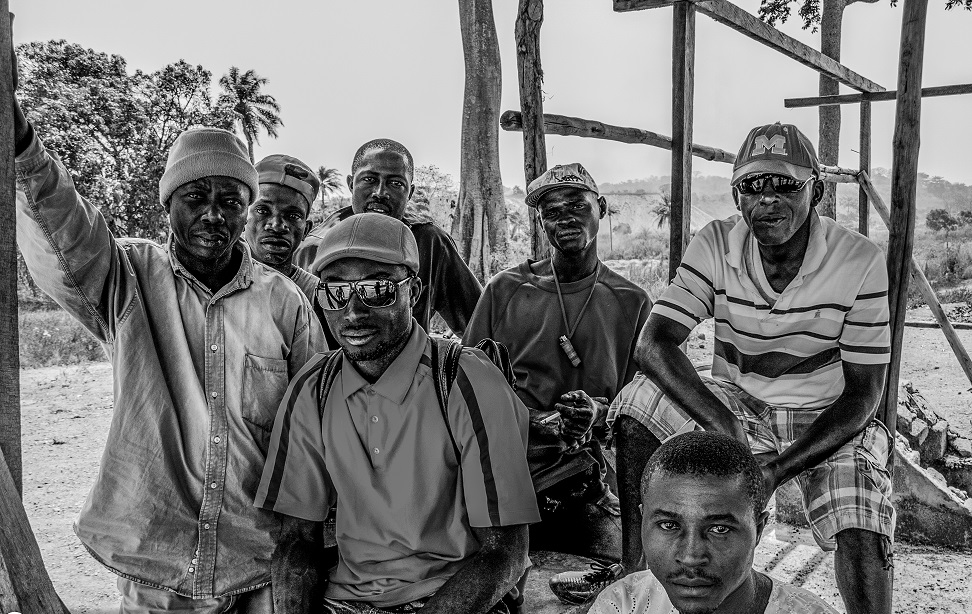
Mining crew at one of the mines of Koidu
Diamond mining has a negative impact on several aspects:
- Diamond is a very expensive gem, but miners usually get a measly payment. According to some miners, some earn about 20,000 leones (2014) [about 2 euro] a day to do hard labour in the burning sun. The big money makers are the exporters and the ones who polish the diamonds outside the country. Of course, the government takes their share by claiming export taxes on the gem.
- Local communities and villages are destroyed so people could mine for diamonds. Sometimes, the village chiefs sell a piece of land to miners. The people who live there lose their house and have to find a new place to live.
- The mining activities destroy the land. The devastating piece of ground is hardly usable for agriculture and is inhabitable. On top of that, toxic substances may release in the waters, large water pits are formed and there’s a risk of people drowning in it, especially dangerous for children. The water is still and is a breeding place for mosquitoes. A project such as “Life after diamonds” try to restore the land and recover it to use it for agriculture.
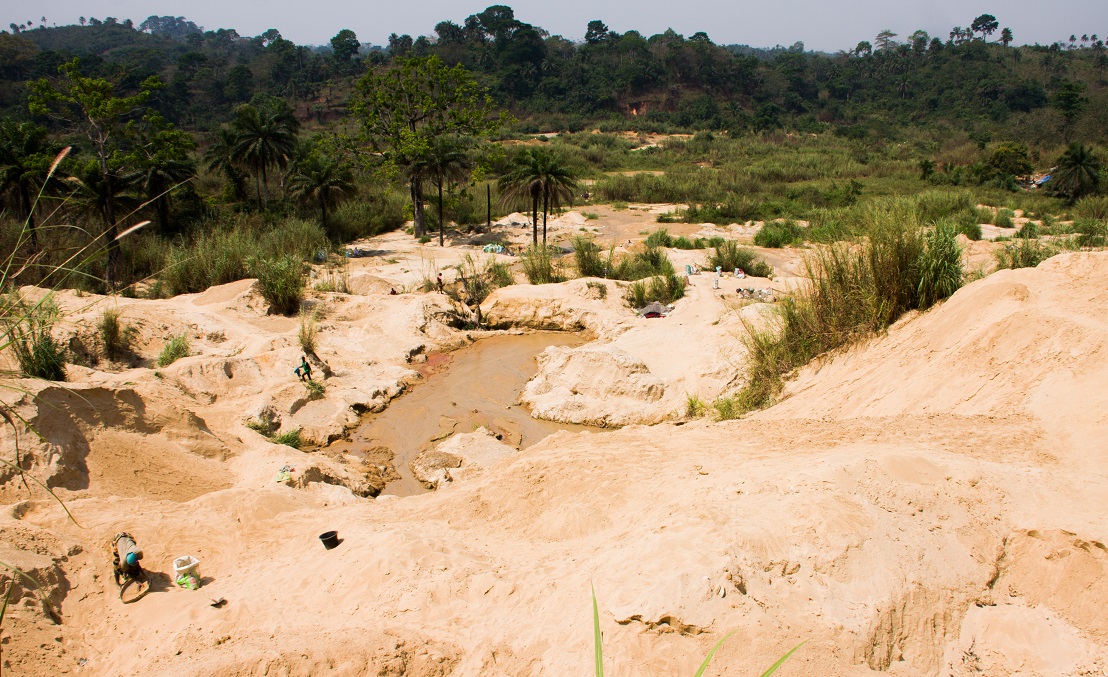
Abandoned mining pit which is still used to search for very small diamonds that may have been overlooked by large scale miners
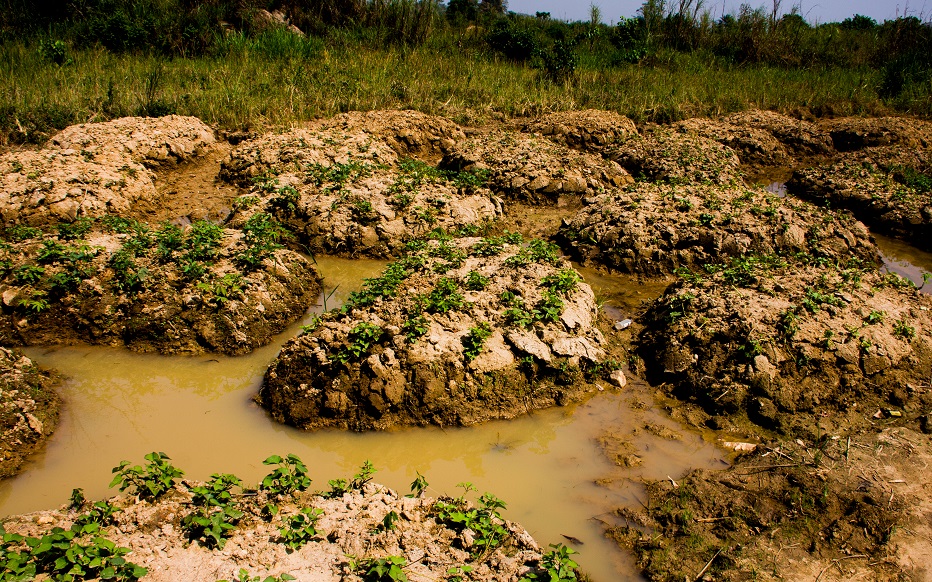
Here’s an example of how they recover the land for agriculture.
I was in Koidu, the main city of Kono district. Diamond offices fill the street. The road is still under construction. The ride to Koidu took almost a whole day by minivan, yet it is about 250 km from Freetown. The ride was extremely bumpy.
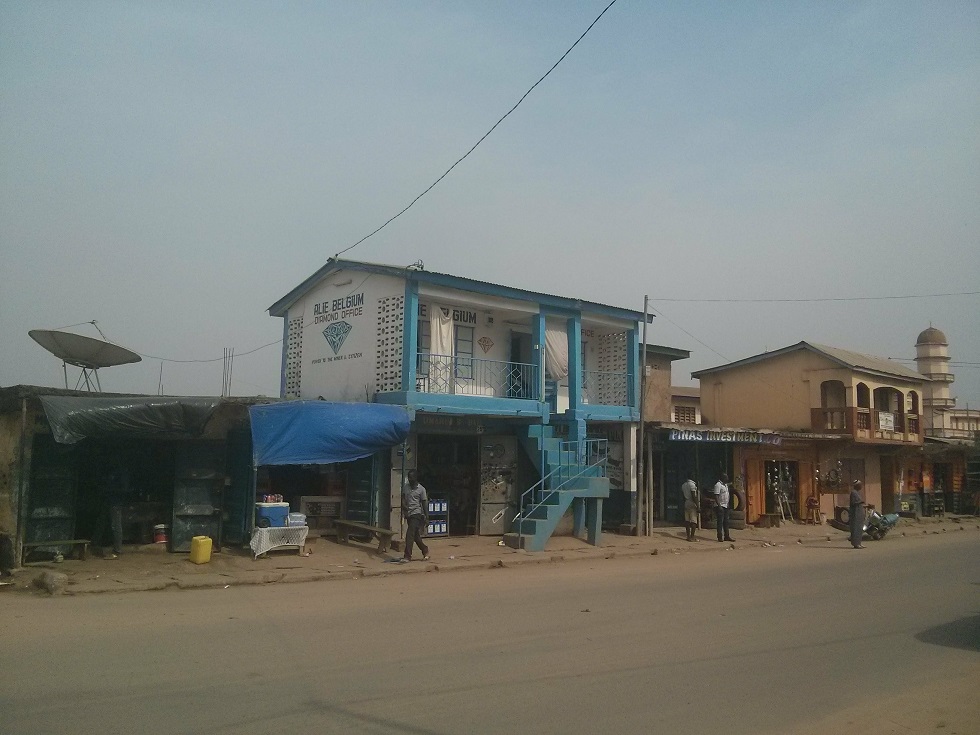
Diamond office in the centre of Koidu
The first diamond mine I visited was a local famous mine called “number 11”. It is known for children who mine at this place. As I arrived I was surrounded by a group of local miners asking what the purpose of my visit was. I introduced myself and told them I was just here because I was curious to see how diamonds are mined. They all seemed a little suspicious, but they allowed me to take a look. However, I was not allowed to take pictures. I asked them why they are so strict about the pictures. All they wanted to tell was “We had visitors before and by taking pictures they tried to bring us in discredit in their country.”
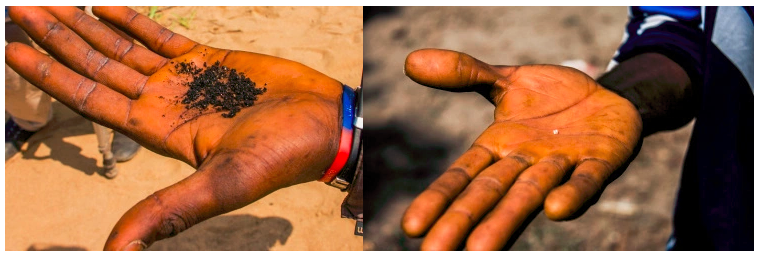
Local miners showing me ‘black dirt’ and a very small diamond
I asked the local taxi biker to proceed to the next place. Upon arrival, a bill of 10,000 leone allowed me to enter their diamond mine. They showed me a diamond and also the mineral (the black dirt) they find surrounded to diamonds.
Other locals try to find very tiny diamonds in abandoned diamond pits by large companies in dry sand. Chances are very slim, but this technique doesn’t require you to stand in the water all day. Someone prospecting the sand on the left picture. On the right picture, you can see someone washing dirt in the hope to find a shiny piece of diamond.
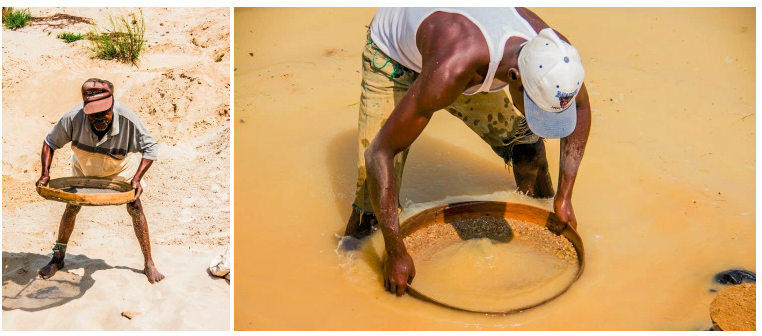
On the left someone looking for small diamonds in abandoned pits. On the right, you see the most used technique by local miners. Dirt is being washed and inspected for diamonds.
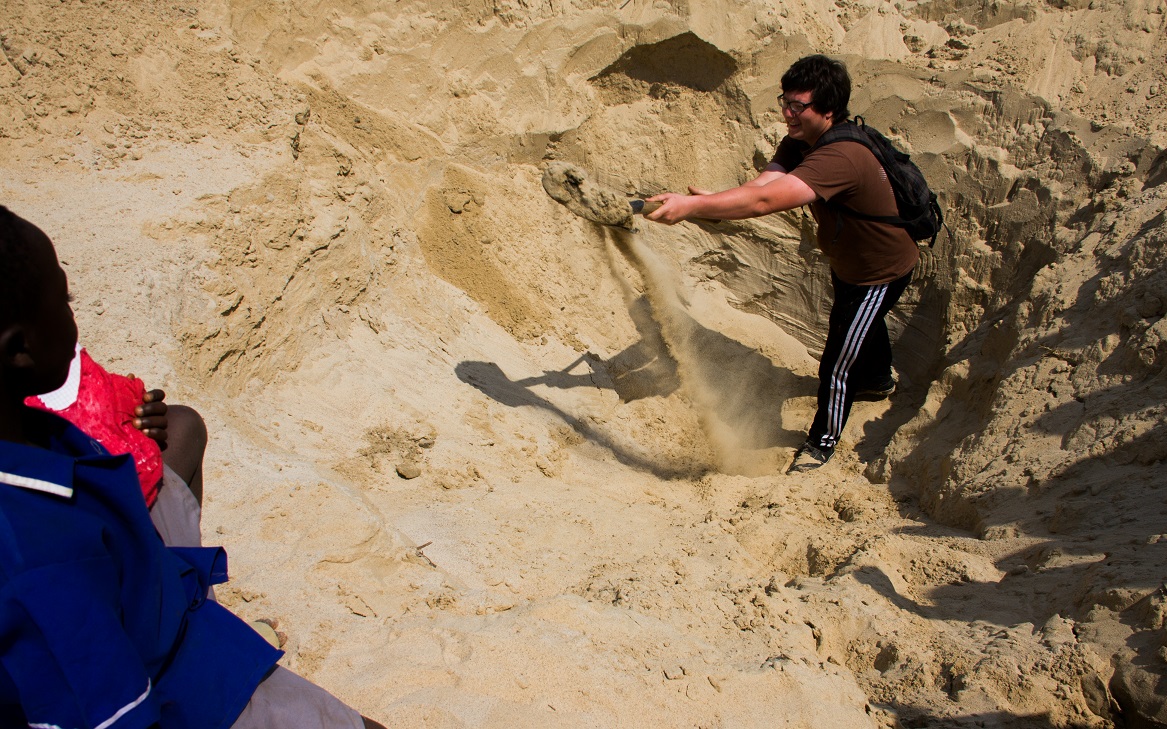
I also tried the sand mining, which was pretty exhausting.
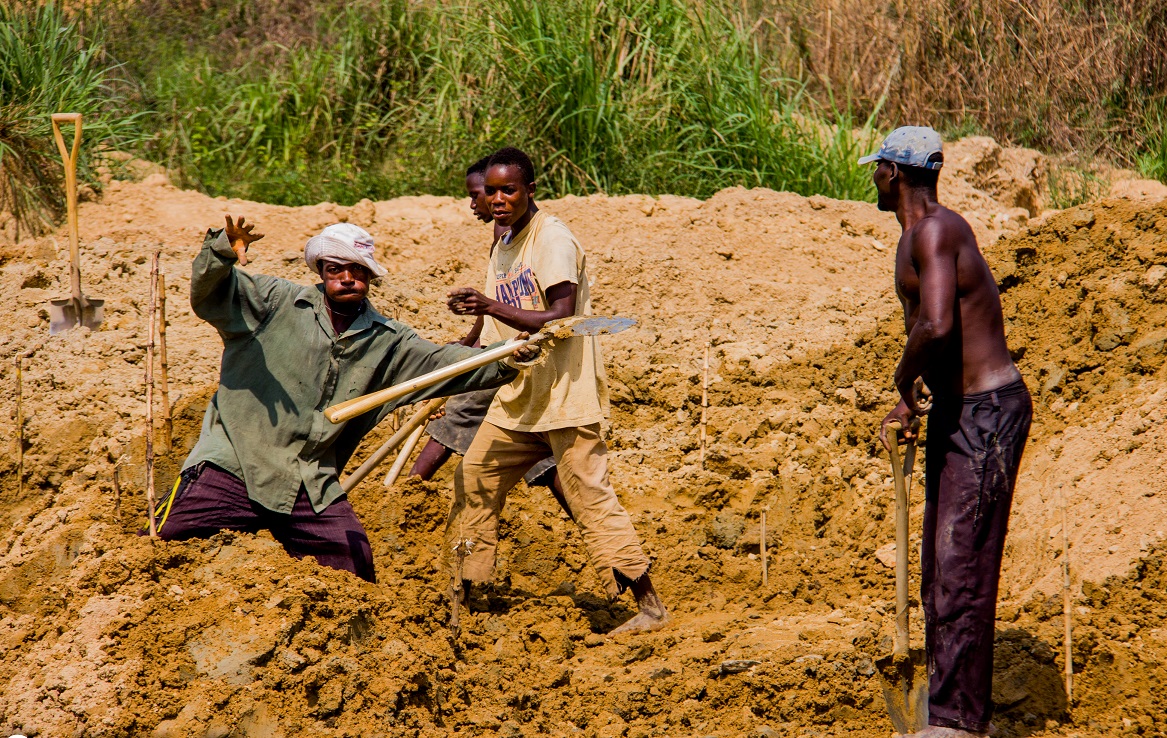
The next local mining location I visited were much more laid-back. They were making funny faces to the camera when I was taking photos.
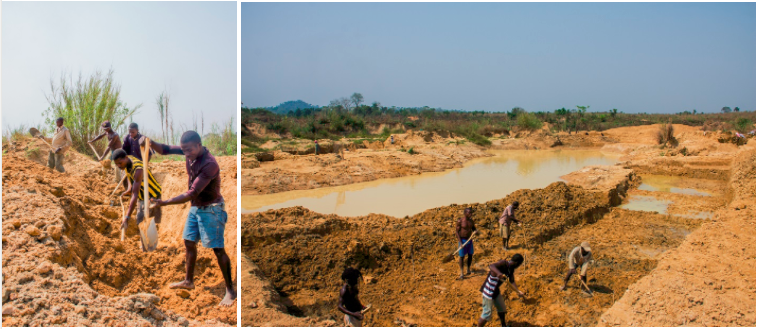
Further deep into the land of Kono, you can find local miners who own decent equipment also.
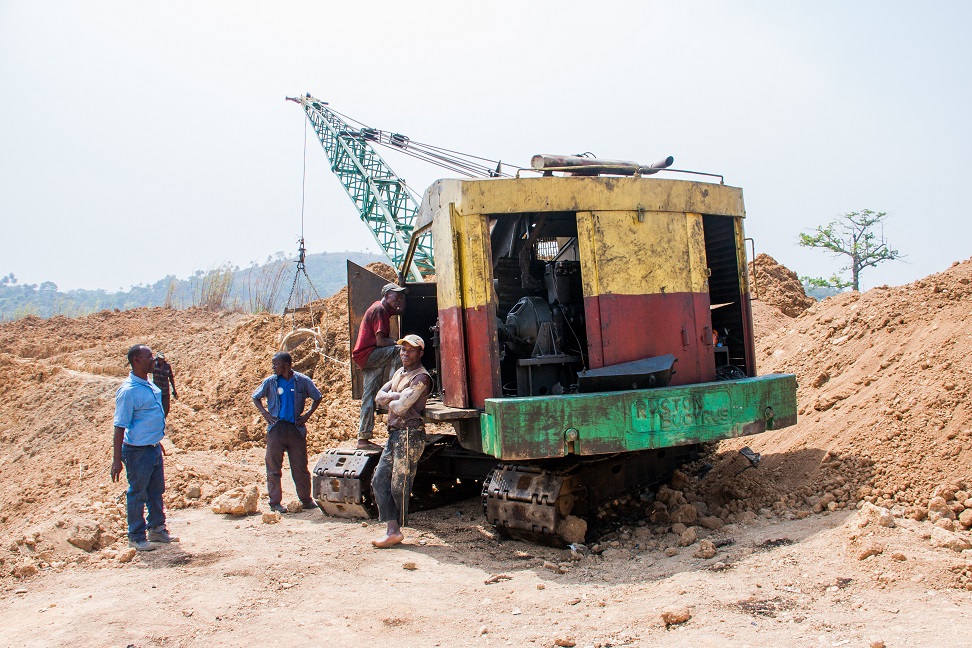
First, the dirt is being dug up.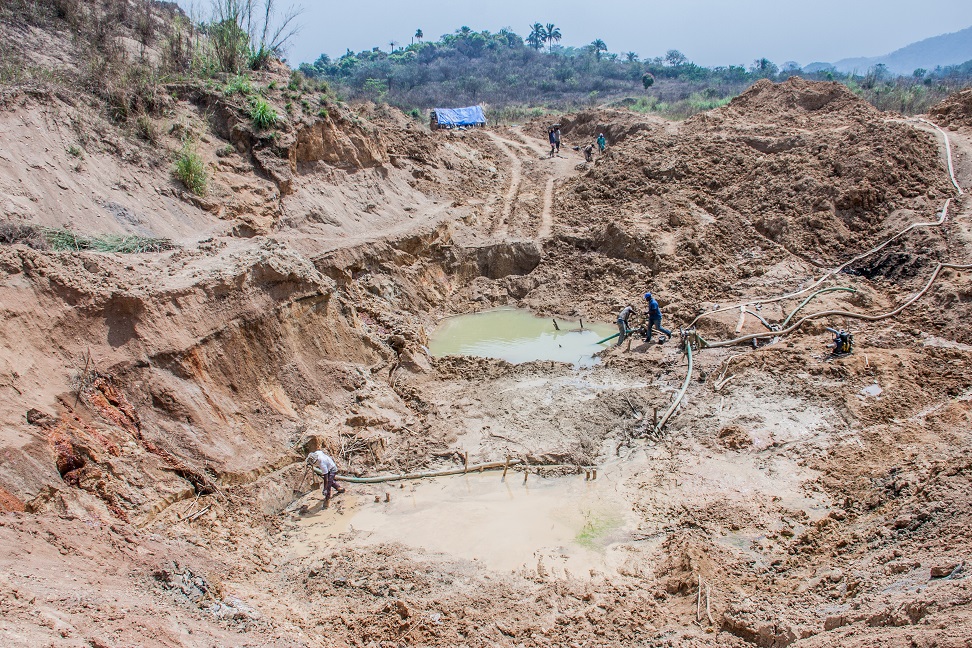
A continuous running water pump is necessary to remove the groundwater from the pit.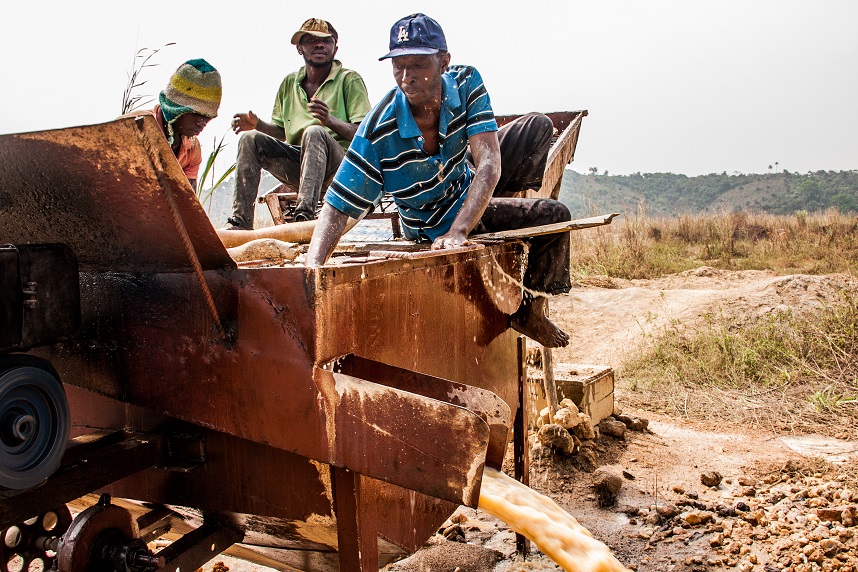
The dirt is being washed in a washing plant.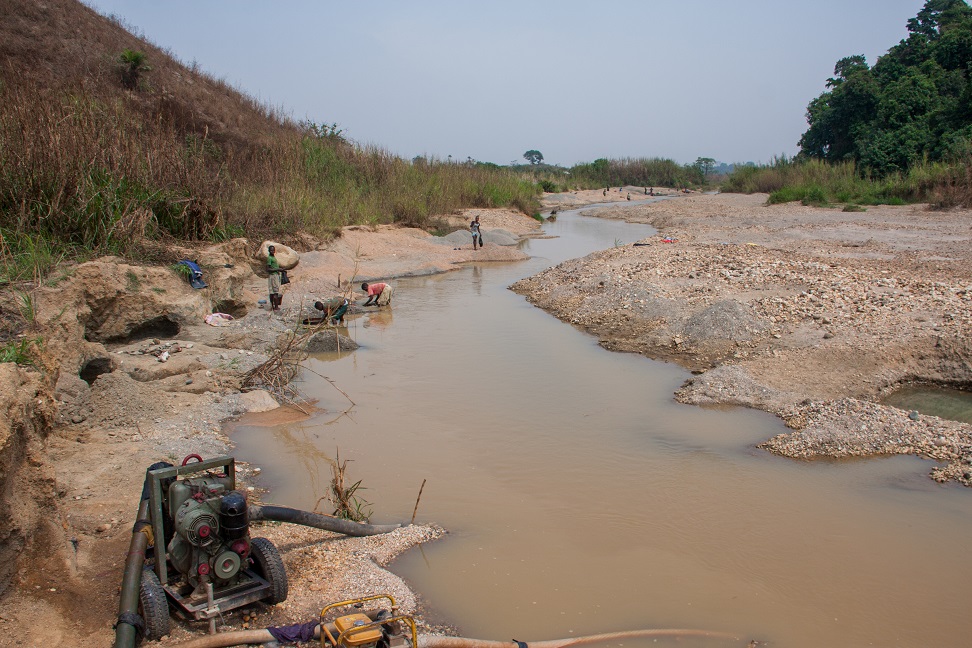
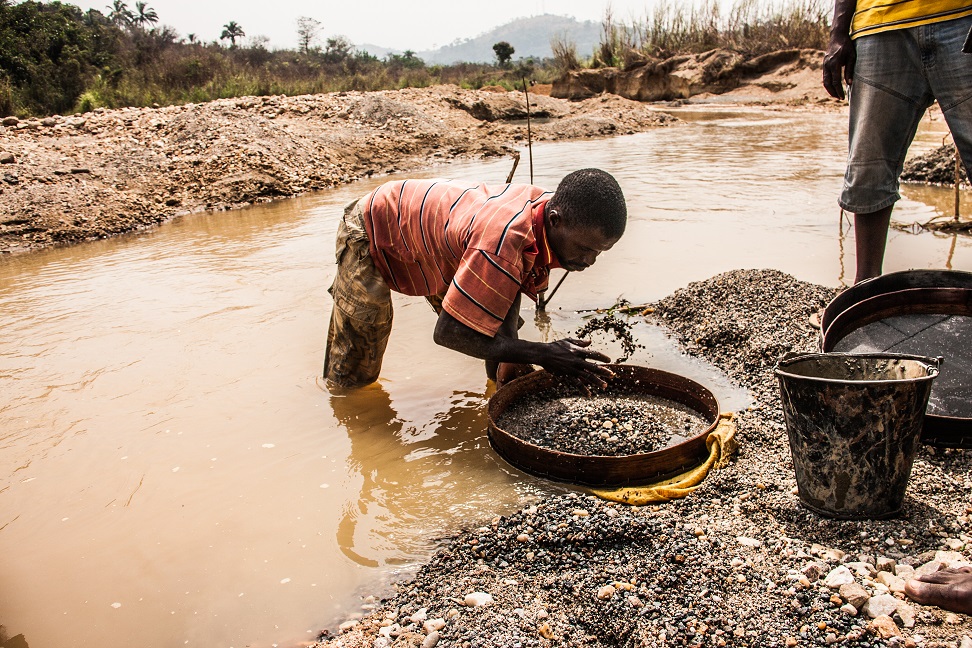
In the end, the remnants from the washing plant are manually checked for diamonds with a pan. A shining diamond is easily identified with the burning sun on these pans.
Will Sierra Leone ever develop? The answer is not easy. Not only does the government has to change a lot, Western capitalism can only grow if resources are bought as cheap as possible, just like the clothes industries in Asia. Are fair trade diamonds a possible solution?

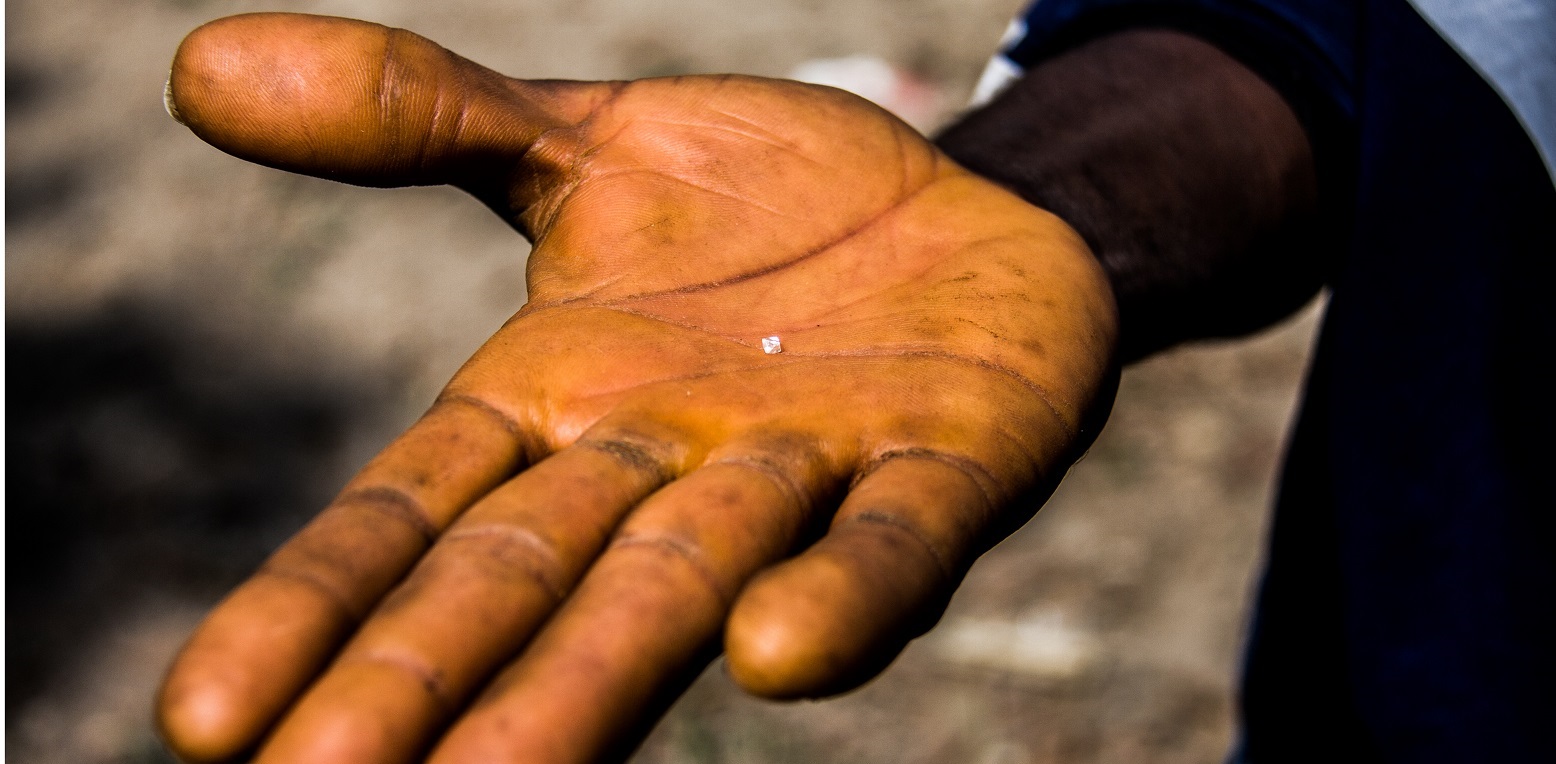
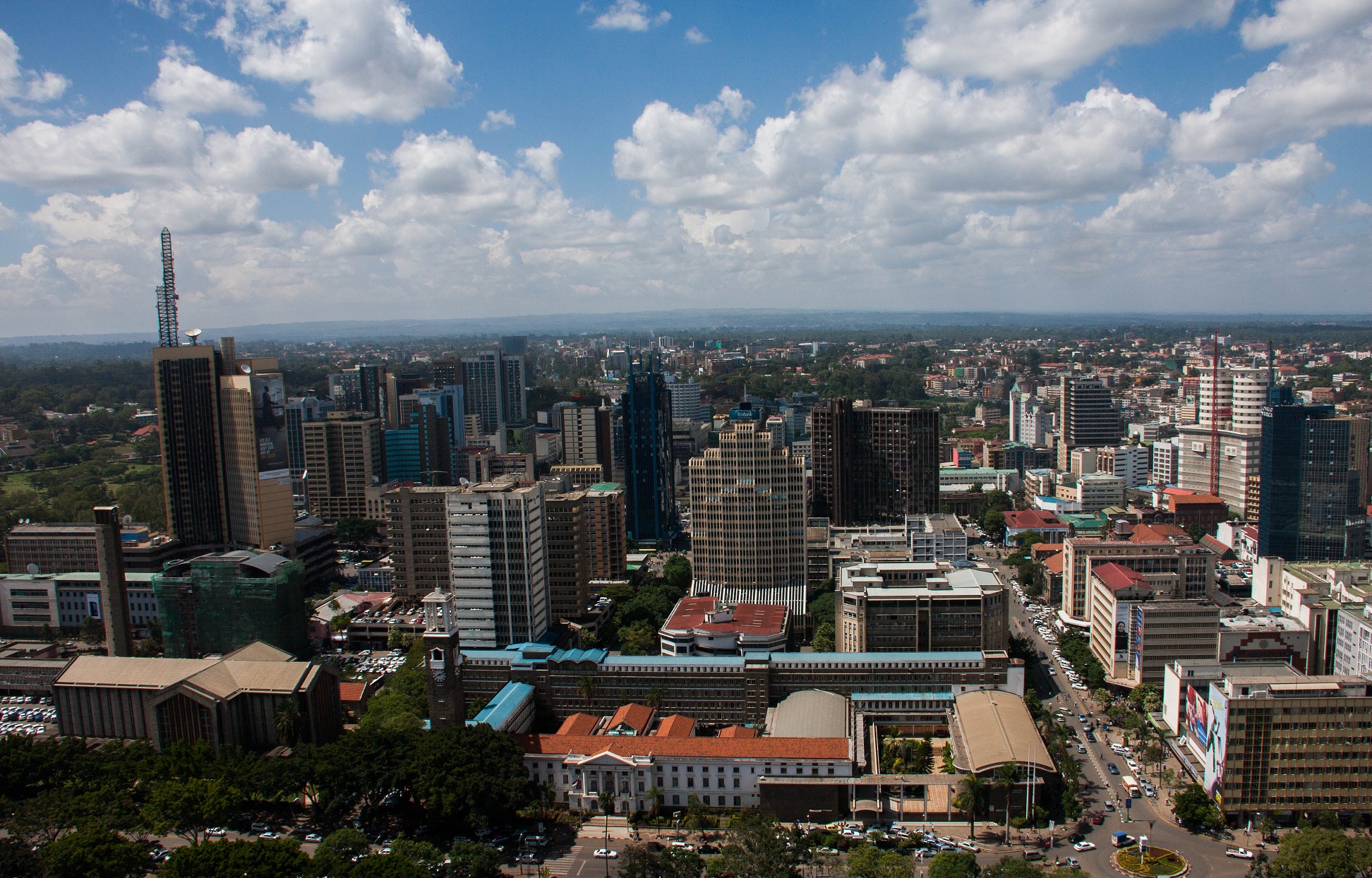
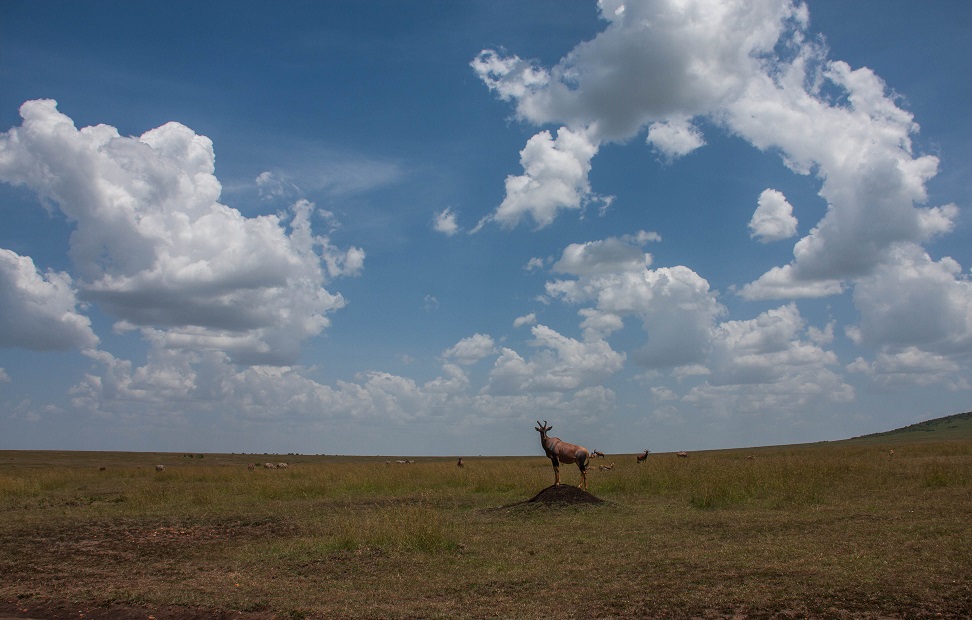
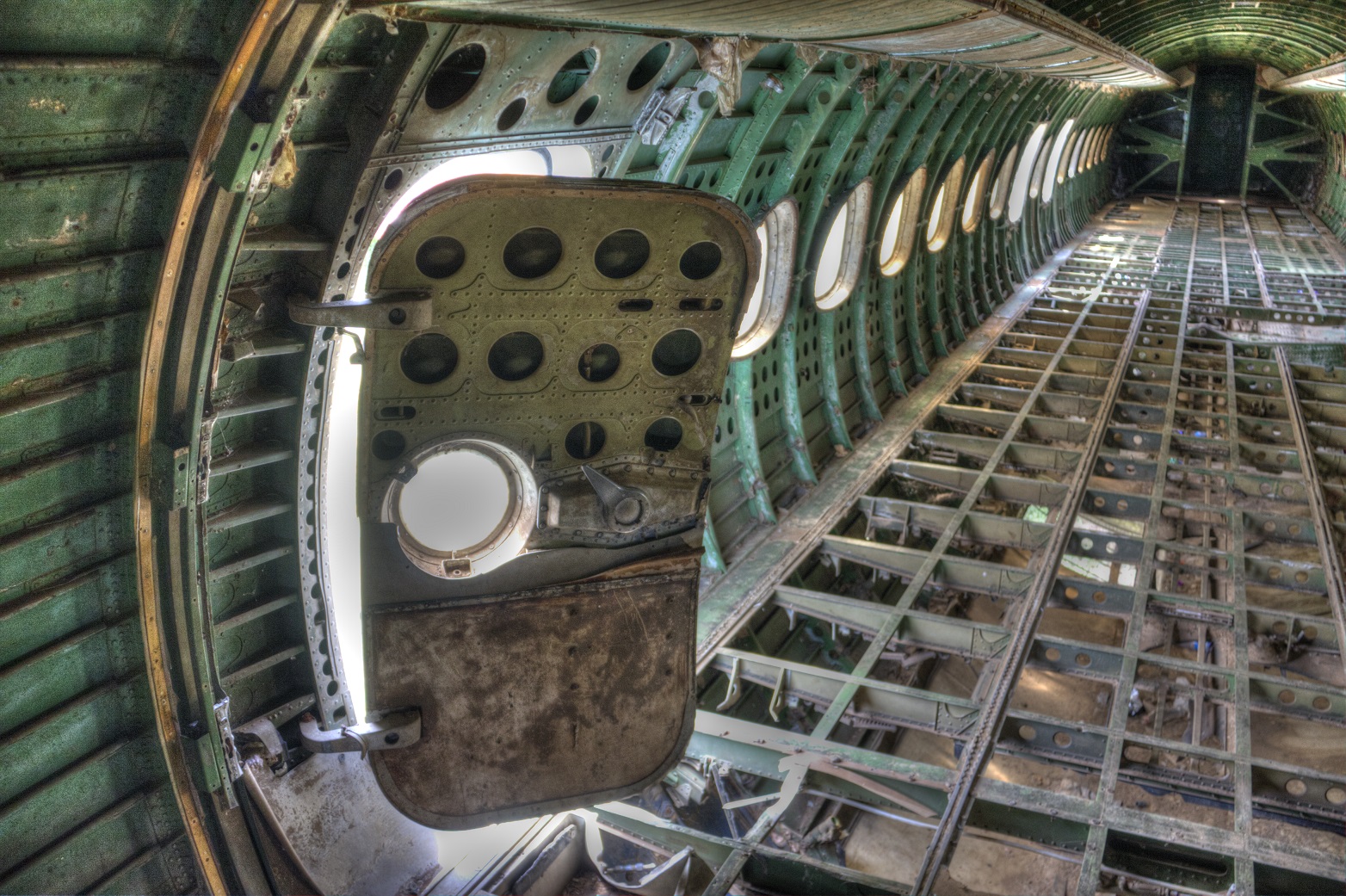
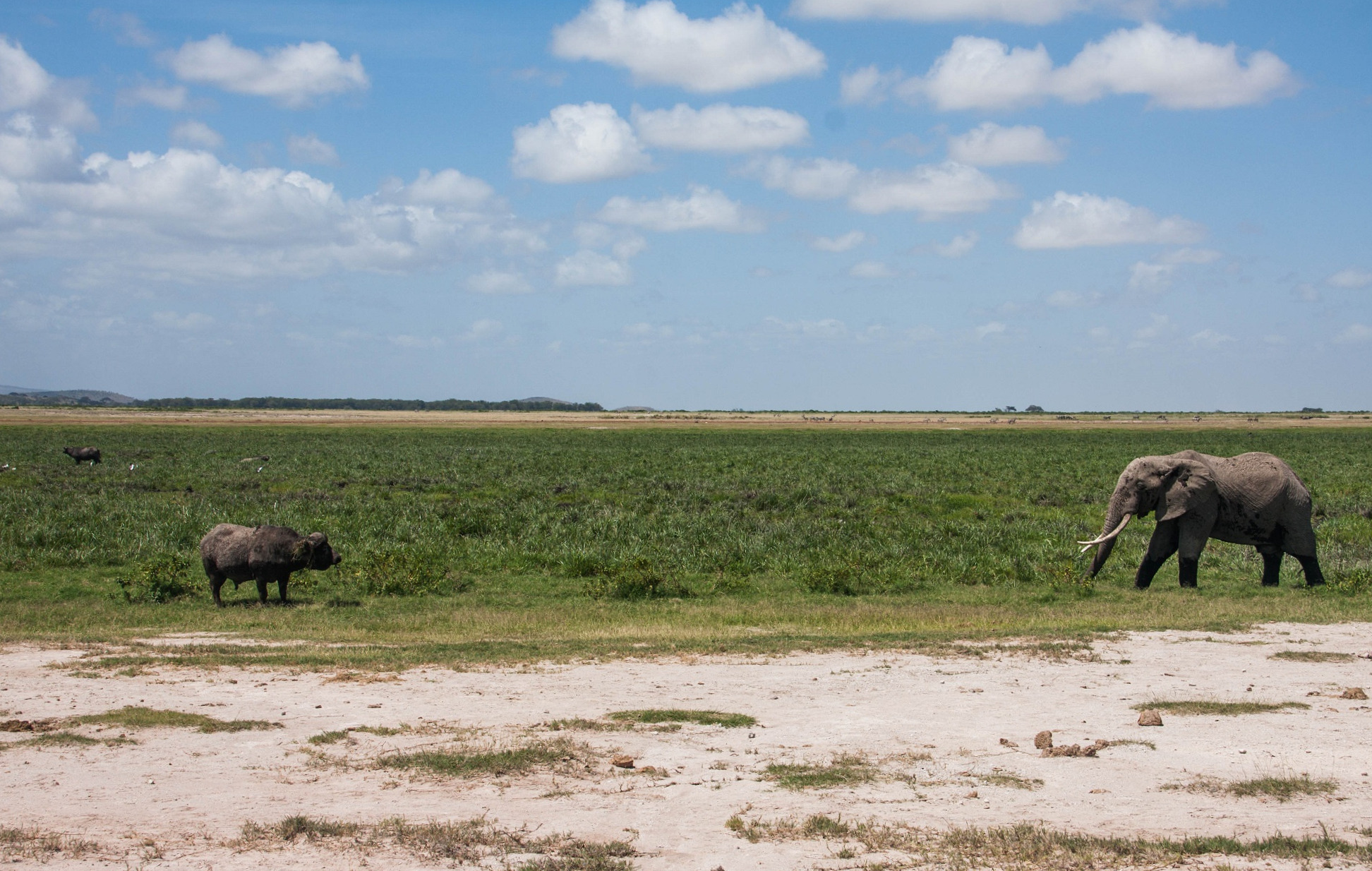
A fascinating read – Would love the chance to visit somewhere like this and see how the locals live and work!
Great article! Love reading your blog.